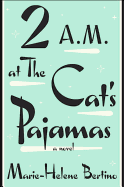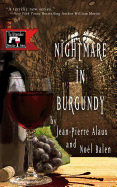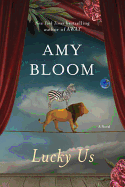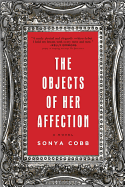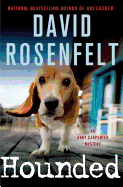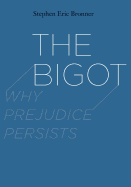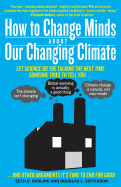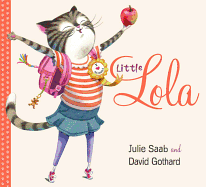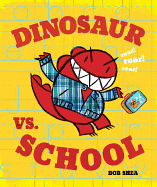Friday, August 1, 2014
To continue our summer reading memories, we'll start with the coolest answer so far, from Christopher Priest, Shelf Awareness marketing manager: "The Dharma Bums while hitchhiking around the U.S. the summer I turned 19, or The Mandarins during a summer in Paris." That's hard to top, but Dave Wheeler, our publishing assistant, offers up Diary by Chuck Palahniuk: "It came out late the summer of 2003. I was working at my hometown's public library and picked it up right away because I'd just finished Lullaby. The weather was mercilessly hot that year, so I remember really commiserating with the people of Waytansea and their awful, stuffy summer of tourists. Like everything by Palahniuk, it's twisted and visceral and nauseating and violent and gripping, which is all I wanted as a 16-year-old reader. So, obviously, when I was a bookseller I gave terrible (read: awesome!) advice to parents who asked what was appropriate for their teenager to read."
Heather Young, Shelf's associate editor, will never forget July 2007: "I got gussied up in my best wizardly dudes, visited Diagon Alley (the street behind [publisher] Scholastic's office, which had been converted into a magical thoroughfare) on a hot New York night, and picked up my preordered copy of Harry Potter and the Deathly Hallows from McNally Robinson (now McNally Jackson) at midnight. By the time I got home in the wee hours, I was so tired I could only manage 38 pages before I fell asleep, but I finished it the next day."
Our publisher, Jenn Risko, recalls her eighth summer, where she "discovered the Little House Books, and read them all. They couldn't have been any farther from my New Jersey childhood, and that's exactly what I wanted." John Kieltyka, our product manager, read James Baldwin's Another Country, summer of 1989, New York City: "Brutal, hot, profound, sad and electric. Made want to stay right where I was and run screaming, simultaneously." --Marilyn Dahl, editor, Shelf Awareness for Readers
2 A.M. at The Cat's Pajamas
by Marie-Helene Bertino
Precocious nine-year-old Madeleine Altimari knows her calling in life is to emulate her late mother, a jazz singer "whose voice could redirect the mood of a room." Now that cancer has taken her mother and depression and addiction have hijacked her father, Madeleine can count on only herself to make her dreams come true. When she learns of the Cat's Pajamas, one of Philadelphia's remaining jazz clubs, Madeleine fills with purpose: to find the club, get herself on stage, and sing her lungs out to glory on Christmas Eve.
Sarina Greene, Madeleine's recently divorced art teacher, accepts an invitation to a holiday party at the club knowing her old high-school flame will also attend. Meanwhile, the club's broke owner, Jack Lorca, faces $30,000 in citations and will lose everything if he doesn't pay. Though they're unaware of it, these three outsiders are on a collision course with each other and with the miraculous.
Philadelphia native Marie-Helene Bertino's (Safe as Houses) novel has a verbal cadence that gives the city a thumping heartbeat, capturing the feel of the jazz medium perfectly. Her characters' lives combine, diverge and riff off of each other like solos traded between musicians in a well-oiled ensemble. Bertino's instinct for pushing the boundaries of probability into the realm of the small miracle gives readers the sense that if something unforeseen but truly good could happen at a run-down jazz club on Christmas Eve, then it could happen at any moment. --Jaclyn Fulwood
Discover: A torch song to the power of jazz, determination and serendipity, set at Christmastime in Philadelphia.
Lucky Us
by Amy Bloom
Amy Bloom (Away) applies her talent for pithy prose in her third novel, Lucky Us, the story of two half-sisters who survive abandonment, poverty and the travails of World War II with wit and tenacity.
It's 1939, and Eva and her mother scrape by in their Ohio apartment, anticipating her enigmatic father's Sunday visits. At 12, Eva is unaware of their "second family" status until her mother drops her on her father's much grander doorstep and she meets her half-sister, Iris. Their wary relationship settles into one of symbiosis: Iris is the prizewinning singer and thespian, Eva sews on her sequins. Acknowledging their father has been stealing Iris's hidden prize money, one night they climb down the trellis and onto a Hollywood-bound bus.
Blending narrative and correspondence in a nonlinear style, Lucky Us spans a decade and the globe, as Iris's star soars then plummets. Ever-loyal Eva responds to Iris's needs and duplicitous Dad reappears to join them in a road trip east, where they're hired as house staff for a Long Island family. With plenty of the theatrical in them all and joined by a colorful cast of characters, they ably pull off their roles and thrive until disaster strikes. Tragedy sends Iris to London, necessity propels Eva to a successful tarot-card-reading business, and the war looms large, symbolized by their German-American friend Gus, who is unjustifiably deported.
At the close of this heart-warming novel, packed with phrases begging to be underlined and characters bursting with unwavering love, Lucky Us proves to be an apt title. --Cheryl Krocker McKeon, manager, Book Passage, San Francisco
Discover: Two spunky and incredibly loyal half-sisters navigate small-town Ohio, Hollywood and New York in the 1940s.
This Is the Water
by Yannick Murphy
In This Is the Water, Yannick Murphy (The Call) explores the effect a shocking, seemingly random killing of a community swim team star has on the rest of the swimmers and, more significantly, on their parents.
Annie, a photographer and the mother of two girls on the team, feels conflicted over her brother's recent suicide and is now fearful for her daughters. Her life is further complicated by her attraction to Paul, the father of another swimmer. Paul has entrusted Annie with a secret that he's kept for more than 25 years--one that may shed light on the recent murder of their daughters' teammate--and this knowledge both draws Annie closer to Paul and makes her urge him to share what he knows with the police and with his wife, Chris. Before the murder, Chris was convinced Paul was having an affair; she was wrong then, but even as infidelity becomes more of a possibility, those worries have been pushed aside by her own growing obsession with the killer.
The short scenes are almost like snapshots, each set up by the "this is..." construction of the novel's title to indicate which characters are present. Annie's sections are narrated in the second person--"this is you"--almost as if she's looking back over her own photos of a particularly disturbing swim-team season. The style can sometimes feel as choppy as the pool during a meet, but effectively amplifies the tensions of the shifting relationships. This Is the Water is a chilling combination of crime and domestic drama, and its effects linger. --Florinda Pendley Vasquez, blogger at The 3 R's Blog: Reading, 'Riting, and Randomness
Discover: The disturbing impact of a serial killer on his victim's swim-team community.
The Objects of Her Affection
by Sonya Cobb
Ideas of want and need provide the foundation for The Objects of Her Affection, an engrossing debut novel by Sonya Cobb. The Porters are a young, seemingly idyllic Philadelphia family. Beneath the surface, however, Sophie Porter and her husband, Brian, want different things. Brian, a workaholic curator at the Philadelphia Museum of Art, is focused on his career, constantly traveling. Sophie, feeling neglected and at a professional standstill as a web developer, thinks being approved for a hefty mortgage on a 150-year-old fixer-upper house will empower her life and give the couple's two children the childhood she herself never had.
Brian sees all the problems with the house, while Sophie sees a perfect future. When their adjustable-rate mortgage suddenly skyrockets and the Porters can't pay the bills, Sophie panics, yet she keeps her financial anxieties a secret. While visiting Brian at the museum one day, she discovers a trove of small, poorly stored, valuable works of art. Sophie "accidentally" makes off with a decorative Renaissance mirror. Fearful of having to return it and thinking it might pay off some debt, she sells it to an art dealer who befriends Sophie while pulling her into a life of crime.
"She only wanted what was best for her family," Cobb writes about her deeply flawed, risk-taking protagonist with whom some readers will empathize. The thought-provoking, suspenseful plot will also hold crossover appeal for fans of thrillers as well as those intrigued by the lives of ordinary people misguided by their decisions and desires. --Kathleen Gerard, blogger at Reading Between the Lines
Discover: An ordinary woman becomes a thief of Renaissance art in order to pay the bills.
Mystery & Thriller
Nightmare in Burgundy
by Noël Balen and Jean-Pierre Alaux, transl. by Sally Pane
Benjamin Cooker, the titular sleuth of the Winemaker Detective series by Alaux and Balen (Treachery in Bordeaux), is in Burgundy to be inducted into the Confrérie des Chevaliers du Tastevin (a prestigious honor conferred on only a few winemakers) and to evaluate a number of wines for the next edition of his Cooker Guide.
But as he drives around with his assistant, Virgile, Cooker keeps seeing Latin inscriptions spray-painted in odd places--the front of a café, a stone wall, the middle of a road. His old friend Brother Clément, an elderly monk, reveals that the inscriptions are Bible verses, which include repeated pleas for God's mercy. Cooker and Virgile try to piece together the inscriptions to figure out what's motivating the vandal, but before they fully decipher things, two young boys (paint cans in hand) are gunned down. Were the inscriptions a bizarre teenage prank? Or are darker forces at work in Burgundy?
Nightmare in Burgundy is a slim novel, but its short length belies its intrigue. With few words, the authors have managed to bring thoughtful, proper Cooker and reckless Virgile to life, and ably captured Cooker's unease about the dark nature of the mysterious messages. It's also clear that Alaux and Balen share a love of good wine with their amateur detective; Nightmare in Burgundy is full of oenological references sure to please wine aficionados. This just might be the perfect mystery to read with a glass of vino in hand. --Jessica Howard, blogger at Quirky Bookworm
Discover: A celebrated winemaker is distracted from his wine-tasting trip to Burgundy by ominous vandalism.
Tigerman
by Nick Harkaway
Mancreu, formerly a British colony, is doomed: a political committee has determined that the small island must be burned in order to protect the international community from the bursts of toxic chemicals Mancreu emits. Nick Harkaway's third novel, Tigerman, introduces aging British Army Sgt. Lester Ferris into this strange island. After a difficult tour in Afghanistan, Lester is assigned to Mancreu to serve as the military presence until the island's destruction—a relatively peaceful post to tide him over until retirement. Instead of finding a sleepy community staring down its own death, Lester finds a friend--a nameless boy with a comic-book obsession--and with that friendship comes a purpose; he must get the boy off the island before it's destroyed. When a mutual friend dies in a gang shooting, both Lester and the boy are drawn into a political plot that no one could have imagined existed on an island as inconsequential as Mancreu.
Packed with sharp wit and quick humor, Tigerman will keep readers on their toes. Blink and you'll miss a clever joke or important plot point. Read with a keen eye, though, and Harkaway's novel offers big rewards: a world slightly skewed from our own, and yet still recognizable as the backdrop for a story that asks big questions about parenting, friendship, family, heroes and how to go on living when the world is ending. The resulting novel is a rollick of a read, packing emotion, hilarity and a dose of self-deprecation into a story that is, to borrow a phrase from Lester's young friend, "full of win." --Kerry McHugh, blogger at Entomology of a Bookworm
Discover: The slightly absurd friendship of an aging British soldier and a young boy on an island slated for total destruction, from the author of Angelmaker.
Hounded
by David Rosenfelt
In Hounded, lawyer/sleuth Andy Carpenter finds himself "going to the dogs" once again, but this time the canine in question is accompanied by a four-year-old orphan.
When Andy gets a call from good friend and policeman Pete Stanton asking him to come to an unfamiliar address, he doesn't expect to find a murder scene. Even more unexpected is that Pete asks Andy and his girlfriend, Laurie, to take in the victim's preschool-age son to keep the child out of the foster system, as well as the boy's pet basset hound. The biggest surprise of all comes when Pete is charged with killing the victim, ex-con Danny Diaz.
Andy takes Pete's case, but though everyone who knows Pete believes he's innocent, evidence turns up that the court can't ignore. In the midst of a race-against-time investigation that involves an up-and-coming drug dealer, the Mafia and a pet-pharmaceutical R&D department, Andy and Laurie find themselves falling in love with the boy and contemplating adopting him permanently. But as more bodies pile up and Andy gets closer to the truth, the possibility of fatherhood may have to take a back seat to staying alive.
Filled with the quirky humor and screenplay-fast plotting that have made the series popular, this volume in the Andy Carpenter series is perfect for new readers as well as fans of the series. Easily jumping from a crossword-puzzle tournament to a courtroom, Rosenfelt (Unleashed) knows how to balance thrills, laughs and heart. --Jaclyn Fulwood, blogger at Infinite Reads
Discover: In this installment in the Andy Carpenter series, the lawyer has to juggle his friend's murder case while fostering a small child.
Dear Daughter
by Elizabeth Little
The epigraph to Elizabeth Little's first novel neatly introduces her sassy "celebutante" narrator, Janie Jenkins: "Some girls are just born with glitter in their veins"--attributed to Paris Hilton, no less. When Dear Daughter begins, Janie is fresh out of prison after serving 10 years for the murder of her wealthy socialite mother, released on a tampered-DNA-evidence appeal.
Although fuzzy about what happened the night of the crime, Janie is convinced of her innocence and determined to prove it. She goes off the Hollywood blogosphere grid to follow her only clues: the vaguely remembered overheard words of her mother's last conversation. They lead her to backwater Ardelle, S.Dak., during the annual Gold Rush Days festival, where typical small-town pride meets equally typical small-town gossip and intrigue.
Best known for her nonfiction explorations of language quirks (Biting the Wax Tadpole), Little peppers her novel with the sort of contemporary slang and acronyms typically seen on the screens of hip smartphones. But as much as the voice of Janie entertains, Little drives Dear Daughter with the string of surprises and buried secrets revealed as Janie unravels the mystery of her mother's past. It is a thriller much like Gillian Flynn's blockbuster Gone Girl--except instead of the East Coast literary angst of Flynn's protagonists stuck in Missouri, Little's Midwest visitor really does have Los Angeles "glitter in her veins" and can't quite shake her mother's advice to "wear great clothes, throw great parties, and give money to kids with cleft palates." --Bruce Jacobs, founding partner, Watermark Books & Cafe, Wichita, Kan.
Discover: A young woman--part celebrity, part sleuth and all sass--is out to prove she didn't murder her mother in this smart debut thriller.
Social Science
The Bigot: Why Prejudice Persists
by Stephen Eric Bronner
George Bernard Shaw once said that there's nothing more dangerous "than the conscience of a bigot." Stephen Eric Bronner, distinguished professor of political science at Rutgers University and author of A Rumor About the Jews, explains why in his wise and thoughtful The Bigot.
The prejudice of a bigot is hostile, destructive and malignant. The offender can be, among other things, a sexist, a narcissist, an anti-Semite, a chauvinist, a so-called "true believer" or an elitist. Their feelings, Bronner argues, are fueled by contempt, intolerance, paranoia and a desire for revenge. He notes a rise in bigotry since the growth of science, technology and capitalism. The bigot "hates the modern notions of progress." They have brought him "nothing but grief."
The last chapter, "The Bigot Today," is an astute examination of the rise of the conservative right in the U.S. and the Moral Majority's influence. The bigot became integrated into the conservative mainstream while the Tea Party "channeled the bigot's prejudice" and enabled reactionary fanatics. Bronner notes that there are now more than 10,000 hate websites and their crude (often pseudo-scholarly) articles are directed primarily to young people and even preteens. Sadly, Bronner concludes that fighting the bigot is a "labor of Sisyphus."
At just over 200 pages, Bronner's work reads like an extended essay and draws on a variety of sources for support, including history, political philosophy, novels, films and music. The prose is measured and accessible. One hopes that a future paperback edition will give The Bigot the opportunity to reach the wider audience it deserves. --Tom Lavoie, former publisher
Discover: An insightful, accessible and compact inquiry into why people hate other people.
Nature & Environment
How to Change Minds about Our Changing Climate
by Seth B. Darling and Doug L. Sisterson
Climate change and global warming are accepted facts by many, but in any crowd there are bound to be one or two skeptics. In order to help these disbelievers understand the scientific data available, Seth Darling and Doug Sisterson have written a comprehensive guide. With humor and copious research, the authors (both researchers at a U.S. Department of Energy research laboratory) take 15 of the most common arguments against climate change and turn them upside down, providing nonbelievers and supporters of climate change with statistics and analysis that will help them fully understand the problems the world faces.
Topics include "the confusion of climate with weather," "claims that global warming isn't such a bad thing," "the belief that reports about climate change are all parts of a conspiracy" and concerns that "carbon taxes will kill jobs and hurt the poor." Darling and Sisterson show the connections between human activity on a global scale and the increases in the Earth's temperature, coastal flooding, aggressive rain- and snowstorms, ocean acidification and the damage to biodiversity and plant and animal habitats. However, the authors leave readers on an optimistic note: although the data shows that planetary changes are occurring, they stress that the damage can be mitigated, providing humans are willing to act immediately and shift toward alternative energy sources. For those who want a more thorough grasp of the situation or need facts and figures to help sway others, this book is right on target. --Lee E. Cart, freelance writer and book reviewer
Discover: A systematic approach to demystifying global warming.
Children's & Young Adult
Little Lola
by Julie Saab, illus. by David Gothard
The gray-and-black–striped kitten star of this gently humorous picture book is sure to win hearts as she makes her way through the school day.
Little Lola wakes up "extra early" on her park bench and decides to "have an adventure." A pair of castoff pink sunglasses, jeans skirt, candy-stripe top, sneakers and backpack give her just the props the feline needs to head onto a school bus and see what awaits her. Husband-and-wife collaborators Julie Saab and David Gothard let youngsters just starting school step into Lola's shoes as she discovers "a place for everything and everyone at school." The cat practices writing (her name) and reading, adding (goldfish crackers to a bowl) and subtracting (eating them all: "yum!"). In the illustrations, Lola maintains her feline qualities (she paints by paw print and hides in her backpack with her tail giving her away) while also serving as appropriate stand-in for new students navigating their way through their first day. A clue during story time hints at the show-and-tell chaos to come (Lola's mouse gets loose), but Lola does a massive clean-up and heads back home to her bench, her adventure completed.
Lola's many successes will help give first-time kindergartners confidence that they, too, will be able to adjust to this new environment and learn the ropes. --Jennifer M. Brown, children's editor, Shelf Awareness
Discover: A charming feline hero whose first day at school will help guide new students through theirs.
Dog and Bear: Tricks and Treats
by Laura Vaccaro Seeger
Best friends Dog and Bear are up to their usual shenanigans--this time with a Halloween theme.
In the first of three interconnected tales, as the two pals try on potential costumes, Bear discovers the mirror. Caldecott Honor artist Laura Vaccaro Seeger (First the Egg; Green) portrays Bear initially surprised ("Oh, hello," Bear says to the mirror), then delighted ("Oh, my," he cries while doing a handstand in front of the mirror). Next Bear needs a reality check: "Dog, Dog! Come quickly!" Dog sheds his full Merlin regalia (complete with star-studded pointy hat and cape) and affirms once more why he's the perfect buddy for Bear. Young readers will adore "Ding Dong," the second caper, in which Dog completely misconstrues the concept of costumed visitors' refrain: "Trick or Treat?" And what costumes Seeger depicts! Pumpkinheads, one-eyed and green-antennaed aliens, and a mummy. Even novice readers will know that Dog's mistake may well be in his favor. Dog and Bear get the last laugh in the third story, when Ghost tells them they can't have a treat because they're not in costume.
Once again, Seeger proves she's a master of minimalism, allowing the barest of text and abundant white space to keep the focus on the two friends and the words and concepts young readers are acquiring. This is all treat. --Jennifer M. Brown, children's editor, Shelf Awareness
Discover: Dog and Bear star in a trio of humorous Halloween-themed tales aimed at beginning readers.
Dinosaur vs. School
by Bob Shea, illus. by Bob Shea
Having tackled bedtime and toilet-training (among other hurdles), Dinosaur now takes on preschool, with comical results.
Playing the part of the universal preschooler (save for his big teeth and scaly spine), he gives his battle cry: "Roar! I'm a Dinosaur!" The tomato-red, blustering hero dons a plaid jacket, grabs his lunch pail and announces, "Roar! I'm going to school!" Bob Shea (Dinosaur vs. Bedtime; Unicorn Thinks He's Pretty Great) depicts an uncertain Dinosaur in pale outline with eyebrows raised as he considers the prospect of "meeting new friends." He rises to the challenge, however ("DINOSAUR WINS!"), and with new friends at his side, the other experiences (dressing up, art projects, making music) seem less daunting ("Dinosaur wins!"). Shea portrays a pig, cat, fox and, yes, unicorn in Dinosaur's circle of friends. Large swaths of color behind thickly painted black outlines, and patterns of polka dots and stripes will hold preschoolers' visual interest as the author-artist shifts the moods from page to page.
For Dinosaur, even clean-up feels manageable "when everyone helps." Guess what? "Everyone wins!" Shea not only instills confidence about the value of new experiences, but also how friendship can lighten any load. Friends alone make a compelling reason to leave the safety of home and bravely enter preschool. --Jennifer M. Brown, children's editor, Shelf Awareness
Discover: The victorious red dinosaur's first foray into preschool.
| Advertisement Meet belle bear! |


